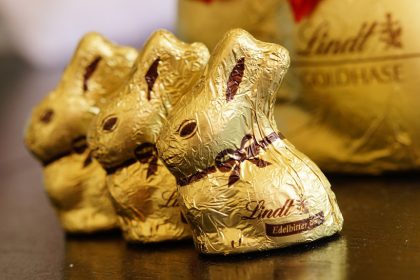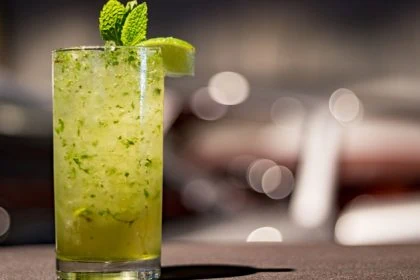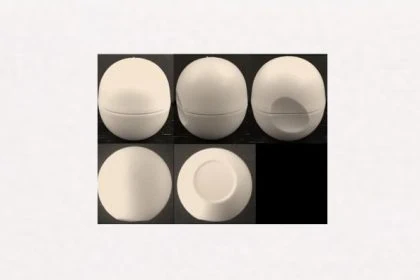For years, Lindt-Sprüngli has been fighting in the courts for trademark protection for the famous Gold Bunny. Today, the case was also heard by the Federal Supreme Court. The question was whether Lindt Gold has acquired market validity as a colour trademark.
 For years, Lindt-Sprüngli tried to obtain comprehensive protection as a 3D trademark for its famous golden bunny. However, Lindt failed with this before all instances, a procedure that was taken all the way to the European Court of Justice (ECJ). Ultimately, a shape such as the gold foil sitting bunnies, which have been common for decades, should not be monopolised by a trademark registration.
For years, Lindt-Sprüngli tried to obtain comprehensive protection as a 3D trademark for its famous golden bunny. However, Lindt failed with this before all instances, a procedure that was taken all the way to the European Court of Justice (ECJ). Ultimately, a shape such as the gold foil sitting bunnies, which have been common for decades, should not be monopolised by a trademark registration.
Lindt wants to protect Lindt Gold
As a result, Lindt changed its protection strategy. The Swiss chocolate manufacturer now sought to have the colour gold in the Gold Bunny (shade CIELAB 86.17, 1.56, 41.82) protected as a colour mark. In May 2017, Lindt registered the colour mark “gold” (Pantone Premium Metallics coated 10126 C)” at the DPMA for chocolate bunnies. But Confiserie Heilemann (Germany, now part of the Viba Group) has applied for cancellation of this colour mark, and the case is before the Federal Patent Court. Heilemann also offers sitting chocolate bunnies in gold foil – even with colourful collars and bows.
Not surprisingly, Lindt-Sprüngli sued Confiserie Heilemann for injunctive relief and damages, invoking the well-known use mark, Lindt Gold. The Lindt Gold Bunny has been sold in Germany in this special shade of gold since 1994; in the last 30 years, more than 500 million Lindt Sprüngli Gold Bunnies have been sold in Germany alone.
Whether the Lindt Gold has acquired a reputation
Therefore, the decisive question of today’s BGH hearing was whether Lindt Gold – i.e. the gold shade of the packaging foil – has acquired a reputation under § 4 No. 2 MarkenG (“trade mark protection through use of a trade mark”). The OLG Munich had denied this (judgement of 30.07.2020, ref. 29 U 6389/19).
Although abstract colour marks can in principle also be protected as use marks, the OLG Munich had emphasised, this is only the case if this abstract colour mark is quasi the “house colour” of the company, as is the case, for example, with Nivea blue, Telekom magenta, Milka purple and Sparkasse red. Lindt-Sprüngli, on the other hand, does not only sell “the” gold bunny, so the claimed gold colour only refers to this product.
From this, the OLG Munich developed its decision with regard to trade acceptance. Consumers would not associate a bunny wrapped in gold foil, which otherwise looked completely different from the Lindt Gold Bunny, with Lindt-Sprüngli, as consumers were familiar in particular with their “Gold Bunny”. For this reason, Lindt-Sprüngli could not claim any reputation for Lindt Gold or for the gold colour itself.
The appeal, which was heard today by the Federal Supreme Court (BGH), was directed against this decision. Radio 1 reports on today’s hearing that it is becoming apparent that the BGH will not follow the decision of the Munich Higher Regional Court. The presiding judge, Thomas Koch, said that the questioning that Lindt had submitted to prove that the product had been marketed was methodologically correct and that the result was clearly sufficient.
However, it remains open whether the BGH will decide directly or whether the case will be referred back to the OLG. This is because the Munich judges had not yet dealt with the question of whether there was a likelihood of confusion in the case of the hares.
The BGH plans to announce its decision in the coming weeks.
Would you also like to protect your trademark or brand?
Our lawyers are experienced in trademark and patent law, national and international law.

Quellen:
Press release Ratioeins
Bild:
Efraimstochter | pixabay | CCO License







Leave a Reply